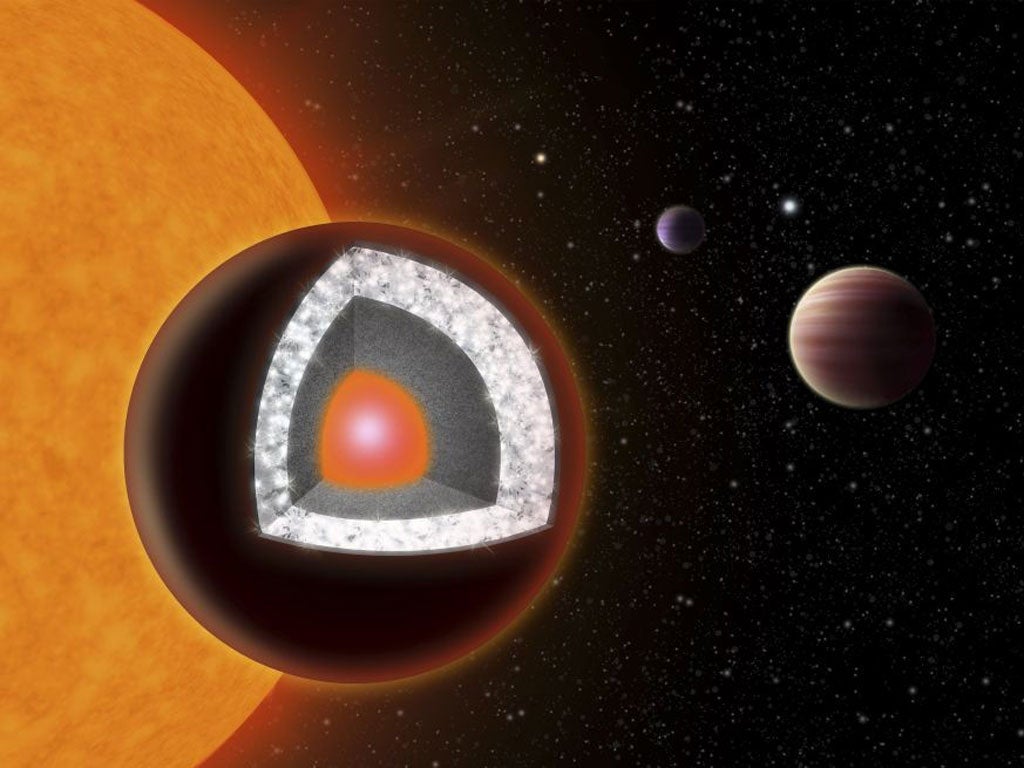Newly discovered 'super-Earth' is made of diamonds, say scientists

It may not twinkle like a star but it is still a diamond in the sky according to astronomers who have found a rocky planet similar to Earth but made of the precious gemstone.
The diamond planet is one of five "exoplanets" orbiting a distant star called 55 Cancri, some 40 light years away from our own Solar System but still visible to the naked eye in the constellation of Cancer.
Scientists said that an analysis of the chemical composition of the planet based on measurements of its mass and radius, combined with computer modelling, suggests its outer crust is largely composed of solid carbon crystals.
"This is the first glimpse of a rocky world with a fundamentally different chemistry from Earth. The surface of this planet is likely covered in graphite and diamond rather than water and granite," said Nikku Madhusudhan of Yale University.
The planet's radius is twice that of Earth's, but its mass it eight times greater, making it a "superearth". It orbits its own star at hyper speed, with a year lasting just 18 hours, and surface temperatures reaching a blistering 2,150C with no possibility of liquid water and therefore life.
The study, published in the Astrophysical Journal Letters, estimates that at least a third of the planet could be composed of diamond, with the rest made up of graphite, iron, silicon carbide and possibly silicates.
"By contrast, Earth's interior is rich in oxygen, but extremely poor in carbon, less than one part in a thousand by mass," said Kanani Lee, a geologist at Yale and co-author of the study.
It is the first time that astronomers have identified a diamond planet, although they have theorised about their existence for some time.
David Spergel, professor of astronomy at Yale, said: "Stars are simple. Given a star's mass and age, you know its basic structure and history. Planets are much more complex. This diamond-rich super-Earth is likely [to be] just one example of the rich sets of discoveries that await us as we begin to explore planets around nearby stars."
Subscribe to Independent Premium to bookmark this article
Want to bookmark your favourite articles and stories to read or reference later? Start your Independent Premium subscription today.

Join our commenting forum
Join thought-provoking conversations, follow other Independent readers and see their replies